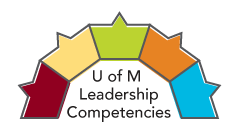Goal setting is the best way to set expectations for an employee that include both key results of what needs to be accomplished and behaviors, or how the results are to be accomplished over the next year.
Depending on the work, some goals can span several years or have a shorter time-span. Use your judgement to set the goals that do not fit an annual time frame.
Review Quick Guide
The Quick Guide to Goal Setting outlines the best practices that are proven to make the goal-setting process more effective:
- Clarify broader priorities.
- Consider employee role and skills.
- Identify up to three most important expectations (in both results - the "WHAT" and behaviors - the "HOW").
- Discuss and invite input to finalize goals.
- Check-in to review progress and update goals.

How results are achieved is often described by how well the person works with others; that's when the behavioral competencies come into play.
Don't have a behavioral competency model?
Go to z.umn.edu/competencies to learn more about the competency model developed at the University of Minnesota to support talent development discussions.
Apply: Practice Scenario & Template
Use this template to set broad, annual goals or ongoing and specific flexible goals as new projects or assignments come up (MS Word).
